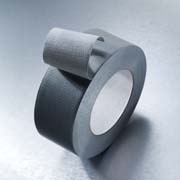
PIBs are not new. BASF invented the materials and has marketed a range of polyisobutylenes since the late 1930s. Since then, additional molecular weights and performance characteristics have been added to offer new options and new applications to formulators. The current portfolio of PIB products includes low-molecular-weight (trade named Glissopal), medium-molecular-weight (trade named Oppanol B 10 SFN - Oppanol B 15 SFN) and high-molecular-weight grades (trade named Oppanol B 30 SF - Oppanol B 200).
Polyisobutylenes are aliphatic polymers and are widely used in solvent-based or melt-based formulations. They are an excellent choice of raw materials for applications that are moisture sensitive or must be water insoluble. Depending on the application, different molecular weight grades or combinations of several PIB grades or combinations of PIB and butyl rubber are used to achieve the properties of the final products. Generally, low-molecular-weight products are used as tackifiers and/or plasticizers, whereas medium- and high-molecular-weight products are used to adjust properties such as flexibility, elongation, cohesive strength, and gas barrier performance. With the correct choice and ratio of PIB(s), formulators can tailor peel and tack as well as extend the lifetime of the finished goods.

Although PIBs do not have more than one double bond per polymer chain, they are considered to be non-crosslinkable products by conventional crosslinking chemistry (sulphur or peroxide cure). There are, however, several special crosslinking modes in which PIBs could become crosslinkable, such as via radiation curing.
Polyisobutylenes have better aging characteristics than rubber-based (especially natural rubber-based) systems. PIB-based products remain permanently tacky and are used on surfaces other polymers do not adhere to.

TYPICAL APPLICATIONS
The window sealant industry in Europe, governed by higher energy standards, is dominated by double-glazing window sealants. PIB is the base polymer and the main component in these formulations. In these sealant systems, mainly Oppanol B 15 or mixtures of Oppanol B 15 and Oppanol B 10 are formulated. Oppanol is primarily used because it has excellent barrier properties and excellent flexibility, even at low temperatures. Furthermore, it is able to seal hermetically, due to its tackiness and cold flow, to even rough glass surfaces.New systems emerging on the market called TPS® (thermoplastic spacer) systems contain PIB. Butyl tape sealants contain a mixture of high- and medium-molecular-weight PIBs to achieve the right combination of strength and tackiness. In general, butyl-based sealants are processed as pliable-tape or as a hot-melt system. They can be used in joints with movement of up to 10-15%.
PIB-based sealants are also used in several non-window applications. Commercial pipes in underground or underwater locations can be protected against the corrosive nature of the environment. Those pipes are wrapped with adhesives tapes that usually contain polyisobutylenes.
Underwater cables are filled with PIB for two main reasons: to provide self-healing properties and to combat potential punctures, and to keep moisture away from the optical fibers.
Higher molecular weight polyisobutylenes are also used in roofing membranes. One notable application is a technology imported from Europe. These roofing membranes are primarily used in commercial roofing and protect the structures from rain and melting snow by providing moisture sealing.
From manufacturing to transports to the dealer, today's automobiles are protected by using a composite polymer layer containing PIBs. In a variety of important automotive sealant applications, polyisobutylenes are used to seal joints, to seal and protect electrical wiring, and to protect body cavities from moisture.

Adhesives generally cover a large variety of chemistry and technology bases.
Polyisobutylenes are used in many adhesive formulations due to their tackiness, flexibility and low cohesive strength. PIB is used in adhesive systems - mainly pressure-sensitive and hot-melt adhesives.
Pressure-sensitive and removable tapes are usually formulated with the use of one or two different molecular weight PIBs and butyl or chlorobutyl rubber. Medium-molecular-weight PIBs are great for adhering to the surface. The high-molecular-weight version is preferred when the finished article is die cut or when the formulation is extruded during processing.
PIBs are not a skin irritant and BASF PIBs have a very low level of impurities. Therefore, PIB-based adhesives that require human contact, such as wound-care products or ostomy devices, are usually based on PIBs.
For more information on polyisobutylenes, visit http://www.basf.com/pib_derivatives.
Table. PIB Property Profile for Outstanding Product Features
(Property profile is unique in the segments of adhesives and sealants)- Excellent barrier to moisture and gas
- Elasticity over a wide temperature range - even at low temperatures
- Permanent tackiness
- Excellent aging characteristics
- Cold flow for self healing materials and hermetic sealing of rough surfaces
- High up-take of fillers
- Odorless and colorless for superior aesthetics
- PIB is a non-curable polymer - except by radiation curing - and certain grades of the MW range are very viscous and have high damping properties.
